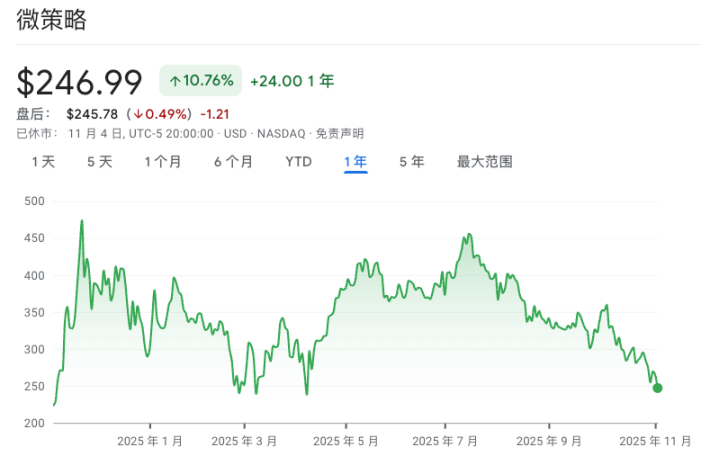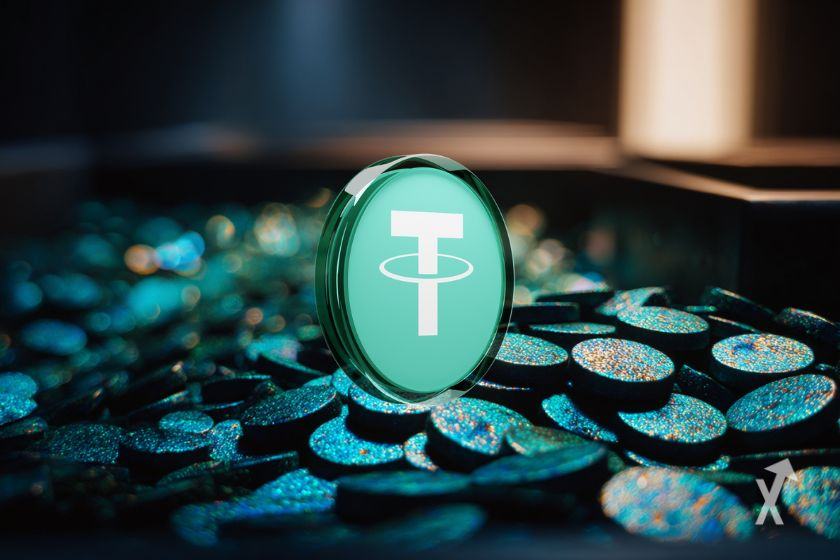As treasury companies start selling coins, has the DAT boom reached a turning point?
From getting rich by holding coins to selling coins to repair watches, the capital market is no longer unconditionally rewarding the narrative of simply holding tokens.
From getting rich by hoarding coins to selling coins to repair watches, the capital market is no longer unconditionally rewarding the story of holding coins.
Written by: ChandlerZ, Foresight News
On November 3, US-listed semiconductor company Sequans Communications (NYSE: SQNS) redeemed 50% of its convertible bonds by selling 970 bitcoins. This transaction reduced the company’s total debt from $189 million to $94.5 million. Sequans currently holds 2,264 bitcoins, down from the previous 3,234. At current market prices, the company’s net bitcoin asset value is about $240 million, and the debt-to-net asset value ratio has dropped from 55% to 39%.
This debt reduction is expected to enhance the company’s previously announced ADS repurchase plan. Sequans focuses on wireless 4G/5G cellular technology in the IoT sector and earlier this year announced the adoption of bitcoin as its primary asset allocation.
Coincidentally, Ethereum treasury company ETHZilla (stock code ETHZ) was announced at the end of October to have sold about $40 million worth of ETH to advance its stock buyback plan. Previously, the ETHZilla board had authorized a stock buyback plan of up to $250 million in August. According to the company’s announcement, “ETHZilla plans to use the remaining funds from the sale of Ethereum for additional stock buybacks and intends to continue selling Ethereum to repurchase shares until the discount of its share price to net asset value (NAV) returns to normal levels.”
ETHZilla is not the only Ethereum treasury to approve a stock buyback plan. The second largest Ethereum treasury, SharpLink Gaming (SBET), also approved a stock buyback plan of up to $1.5 billion, to repurchase shares when its stock trades at or below the net asset value of its crypto holdings.
The same applies to other coins. SOL treasury company Forward Industries announced the submission of a resale prospectus supplement to the US Securities and Exchange Commission and authorized a new $1 billion stock buyback plan. On November 3, the company’s board authorized the stock buyback plan, allowing the company to repurchase up to $1 billion of outstanding shares, with the authorization valid until September 30, 2027. Repurchases may be conducted through open market purchases, block trades, and privately negotiated transactions. The resale prospectus supplement registered a portion of the common stock previously issued in a private placement in September 2025, allowing designated shareholders to resell these securities, but the company will not receive any proceeds from any potential resale.
When treasury companies stop hoarding coins and instead sell crypto assets to repair their balance sheets and maintain stock prices, is the DAT model already coming to an end?
Stock Prices Sluggish, Generally Down Sharply from Highs
As the crypto market continued to decline after the Black Swan event in October, doubts about the DAT model are intensifying. A few months ago, these companies were still seen by the market as leverage tools for wealth in the crypto bull market. But now, the reversal in market conditions means this highly elastic, highly leveraged model is undergoing a brutal correction.
Market data shows that leading stock Strategy (MSTR) has fallen nearly 55% from the peak of this bull market, with a year-to-date decline of over 15%. Other altcoin treasury companies have suffered even more severe declines, generally plummeting from their highs, with some evaporating by as much as 90%. Just yesterday, MSTR fell another 6.88%, accumulating a drop of 54.69% from its peak.

Strategy stock price changes over one year
Ethereum treasury Bitmine (BMNR) fell 7.93% yesterday, down 75.61% from its peak; another, SharpLink Gaming (SBET), fell 10.77% yesterday, down 90.76% from its peak; BTCS Inc (BTCS) fell 9.12% yesterday, down 63.61% from its peak; SOL treasury Upexi (UPXI) fell 8.85% yesterday, down 84.71% from its peak; DeFi Development (DFDV) fell 9.41% yesterday, down 83.49% from its peak; LTC treasury Lite Strategy (LITS) fell 8.33% yesterday, down 80.42% from its peak; TRX treasury Tron Inc (TRON) fell 9.13% yesterday, down 82.87% from its peak.
S&P’s First Rating for Strategy: “Junk B-”
S&P Global Ratings recently rated Strategy for the first time, assigning it a “junk B-” rating. This is also the first time a major international rating agency has given an official rating to a listed company with bitcoin as its core asset. S&P pointed out that although Strategy holds about 640,000 bitcoins, worth about $7.4 billion at current market prices, the company’s debts and dividends are denominated in US dollars, creating a significant currency mismatch risk. If the bitcoin price drops sharply, the company will face liquidity stress or even debt restructuring risks.
By October 2025, the total related debt will be close to $1.5 billion, of which $500 million in convertible bonds will mature gradually starting in 2028, and more than $640 million in preferred stock dividends must be paid annually. S&P’s report noted that this highly concentrated single-asset structure makes the company’s capital system fragile. If the coin price fluctuates sharply, the company may be forced to sell assets or restructure debt, and in the credit rating system, such restructuring is considered close to default. S&P also recognized the company’s financing ability in the capital market and its management of convertible bond risk, and stated that if the company can reduce its reliance on convertible bond financing and enhance dollar liquidity in the future, the rating may be upgraded.
The market’s focus is shifting. In the past, the capital market’s pricing logic for DAT companies was extremely simple: as long as they held a large amount of bitcoin or ethereum, their balance sheets would automatically receive a valuation premium. But as coin prices weaken and liquidity tightens, this narrative is beginning to fail. Investors are returning to the most fundamental question: where is the company’s cash flow? Can it maintain operations without relying on rising coin prices? In other words, holding coins no longer equals value. The volatility of treasury assets is being reclassified as a risk factor, not a growth engine. The market is starting to reward companies that can manage risk, optimize structure, and control leverage, rather than blindly increasing positions out of faith.
Meanwhile, the differentiation among DAT companies is becoming increasingly apparent. Bitcoin and ethereum treasury companies can still attract some institutional attention due to asset liquidity and brand stability, but the stories of altcoin treasuries are fading. Altcoin DATs like Forward, Upexi, and HYPD once attracted market attention with their themes and high leverage, but now they have become the sectors with the most severe drawdowns. The crash in October was essentially a liquidation. Blue-chip DATs deleveraged and repaired their balance sheets by selling coins, while altcoin treasuries were passively eliminated as leverage collapsed. The cyclical nature of the crypto market once again proves a simple rule: in an uptrend, leverage is an amplifier; in a downtrend, it becomes a winch.
When the market no longer pays for stories, companies must regain trust with structure, strategy, and transparency. The future DAT will no longer be synonymous with crypto faith, but will become a more mature form of asset management—possibly more cautious, and also more complex.
Disclaimer: The content of this article solely reflects the author's opinion and does not represent the platform in any capacity. This article is not intended to serve as a reference for making investment decisions.
You may also like
Three things that must happen for Bitcoin to avoid bear market
A $500 billion valuation giant is emerging
With a valuation comparable to OpenAI and surpassing SpaceX and ByteDance, Tether has attracted significant attention.

Prediction markets meet Tinder: Can you place bets on Warden's new product by simply swiping left or right?
No need for chart analysis, macro research, or even inputting the amount of funds.

Why does bitcoin only rise when the U.S. government reopens?
The US government shutdown has entered its 36th day, leading to a decline in global financial markets. The shutdown has prevented funds from being released from the Treasury General Account (TGA), draining market liquidity and triggering a liquidity crisis. Interbank lending rates have soared, while default rates on commercial real estate and auto loans have risen, increasing systemic risk. The market is divided over future trends: pessimists believe the liquidity shock will persist, while optimists expect a liquidity release after the shutdown ends. Summary generated by Mars AI. The accuracy and completeness of this summary are still being improved as the Mars AI model is updated.

